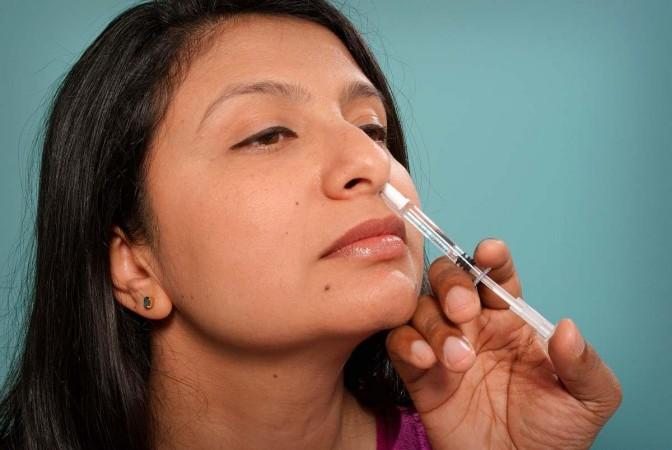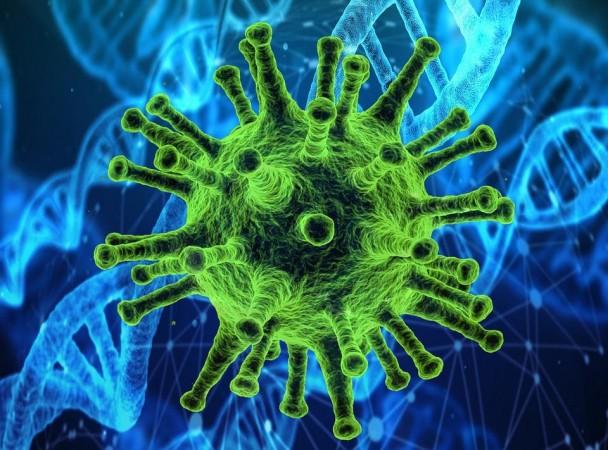Inoculating their populations against COVID-19 has been the highest priority for all the nations across the world in 2021. Unfortunately, several countries find themselves with an insufficient number of shots to fully vaccinate their citizens; given that most vaccines require two doses. It is also being suggested that nasal vaccines may help prevent viral entry in the body (and infecting the lungs). Getting two birds with one stone, researchers have reported that a single-dose intranasal COVID-19 vaccine provides full protection against the SARS-CoV-2 coronavirus.
According to the multi-institutional study, a single dose of a parainfluenza virus 5 (PIV5)–based intranasal vaccine provided full protection against COVID-19 in animal models. It was found that the vaccine was able to block animal-to-animal transmission of the novel coronavirus. The study was published in the journal Science Advances.
"We have been developing this vaccine platform for more than 20 years, and we began working on new vaccine formulations to combat COVID-19 during the early days of the pandemic. Our preclinical data show that this vaccine not only protects against infection, but also significantly reduces the chances of transmission," said Dr. Biao He, co-leader of the study, in a statement.
Alternate Route of Inoculation

All the currently approved COVID-19 vaccines are intramuscular (i.e) they are injected into the muscles so that the anti-coronavirus preparation enters the bloodstream directly. Most of the vaccines have exhibited robust protective action against a wide range of variants. However, this kind of protection relies on the antibodies circulating in the blood to reach the site of entry and infection, and neutralize the pathogen; which can be too late sometimes.
It has been widely accepted that the SARS-CoV-2 virus uses the nasal route to enter the body and heads to other organs from there—particularly the lungs—to infect them. Therefore, the nasopharyngeal area is where the viral load is the highest during the beginning of the infection. Additionally, viruses produced in the mucosal cells (inner lining) are easily shed via exhalation, which increases the chances of transmission from one person to another.
Nasal vaccines—as some scientists argue—can boost the immune response of the mucosal cells in the nasopharyngeal region. This can help tackle the virus at the point of entry itself. Another advantage of nasal vaccines is their ease of administration, much like influenza vaccines. They eliminate the need for additional syringes and needles, and the burden of their safe disposal.
Targeting Cells At Point of Entry

The investigational vaccine described in the study utilizes parainfluenza virus 5 (PIV5). It is a virus related to common cold-causing viruses and can infect several mammals, including humans. However, it does not cause serious diseases. In vaccine development, PIV5 has shown promise as a viral vector. For the current vaccine, it was used to deliver the SARS-CoV-2's 'spike' or 'S-protein' (CVXGA1) to cells and initiate immune responses against the coronavirus.
Previously, the team had demonstrated that this vaccine platform can fully protect animals against Middle Eastern Respiratory Syndrome (MERS), caused by MERS-CoV. Using the strategy used in their PIV5-based MERS-CoV vaccine, the new inhaled vaccine targeted mucosal cells lining the nasal airways and passages.
For the study, the authors used two animal models— a K18-hACE2 mice model for severe disease and a ferret model for upper respiratory tract infection. The animals were inoculated either with a single dose of the nasal vaccine (CVXGA1) or other preparations such as Dulbecco's modified Eagle's medium (DMEM), UV-inactivated SARS-CoV-2, and PIV5. All the animals were challenged with the SARS-CoV-2 virus a few days later.
Full Protection Against COVID-19

The scientists found that in mice that were nasally vaccinated with CVXGA1, localized immune responses were produced. This involved antibodies and cellular immunity that provided complete protection from lethal doses of the novel coronavirus in the animals. All the CVXGA1-immunized mice survived and showed no signs of weight loss. However, mice that received other substances lost weight and none survived.
Even in the ferret model, the vaccine provided full protection, and prevented infection and disease. Specifically, the nasal inoculation blocked the transmission of the SARS-CoV-2 from infected ferrets to their cage-mates who were uninfected and unprotected. The results suggest that there was a marked reduction in replication of the virus in the upper respiratory tract due to CVXGA1 immunization.
"The currently available vaccines against COVID-19 are very successful, but the majority of the world's population is still unvaccinated and there is a critical need for more vaccines that are easy to use and effective at stopping disease and transmission. If this new COVID-19 vaccine proves effective in people, it may help block SARS-CoV-2 transmission and help control the COVID-19 pandemic," expressed Dr. Paul McCray, co-leader of the study.

















